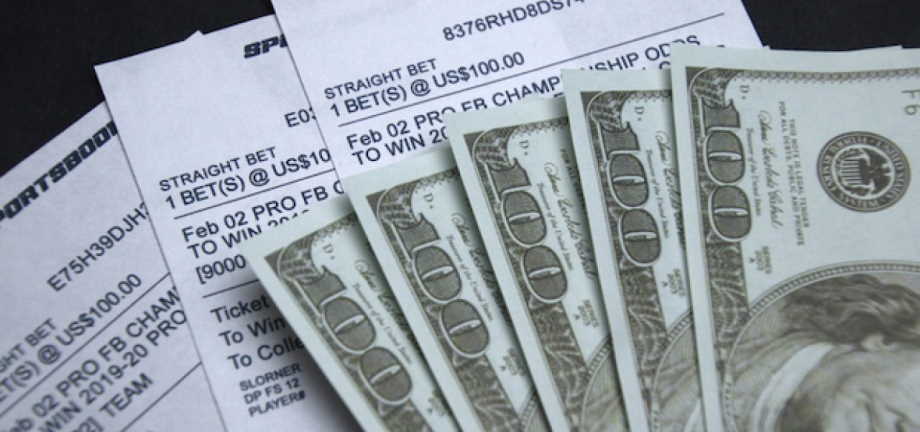Odds Plus Minus Meaning

Everyone makes moneyline bets without even knowing it. Even non-gamblers make moneyline bets. Betting the moneyline for a game is possibly the most simple way to wager on sports. Bettors just choose a player or team to win. If the bettor chooses the winning side, the sportsbook will pay the amount due. It’s really that simple.
With american odds, the number beside the minus (-) represents the amount of money that has to be wagered in order to win $100, while the number beside the plus (+) stands for the amount that will be profited from a $100 bet. A team that is a (-400) moneyline favorite would need to bet $400 to net profit $100, equaling out to a $500 payout. Jun 11, 2020 A minus sign means that the team is expected to win. The higher the number following the minus, the bigger are the chances of that team winning. Now, with the plus sign, it’s the opposite. The bigger the number following the plus, the lower are the chances of that team winning. American odds (aka moneyline odds or US odds) are popular in the United States. The odds for favorites are accompanied by a minus (-) sign, indicating the amount you need to stake to win $100. If the odds are minus (–), then that amount of money must be wagered to win $100. –150 means you must bet $150 to win $100.) If the odds are plus (+), that amount of money would be earned on.
There’s no point spread with a moneyline bet. Bettors are just picking the winning side. While placing a wager is simple, trying to understand how the moneyline pays might be a bit complicated. Both sides of each moneyline wager are paid on a different schedule and that could make this kind of bet confusing.
The favorite team or player on the moneyline is the team that’s expected to win. This side of the bet usually listed with a minus (-) sign. The underdog team or player on the moneyline is the team that’s expected to lose. This side of the moneyline is usually listed with a plus (+) sign. These signs signify how either side of the wager will pay. The minus side will pay less than original wager while the plus side will pay more than the original wager.
BETMGM SPECIAL - New Customers receive a Risk Free First Bet up to $600 + $50 Parlay Insurance for the Big Game! (Just opt-in and place a One Game Parlay wager with 4 legs or more on The Big Game and if you miss one leg, you’ll receive up to $50 back in Free bets. (Maximum 20 legs) - To Claim Click This Link
Example of a moneyline wager
Low scoring sports like baseball, soccer, and hockey are usually bet on using a moneyline. But they are also popular in football. The best way to explain how moneyline bets are paid is with an actual example. Let’s use the upcoming Super Bowl between the Kansas City Chiefs and Tampa Bay Buccaneers as an example.
The easiest way to understand moneyline wagers is by using a $100 bet. Using the above example, the moneyline on the underdog Buccaneers opened at +148 (currently ). At +148 odds, a $100 wager would pay $148 in profit if the Buccaneers won the game (for a total payout of $248). Bettors often like picking underdogs because they are usually “plus” money. This side of the moneyline bet pays out more money per unit than a wager on the favorite.
In this example, the moneyline on the favorite Chiefs opened at -176 (currently ). At -176 odds, a bettor would need to wager $176 to win $100. Since the favorite is considered the team with the better chance to win, a winning wager will usually pay out less than the original amount wagered.
Looking deeper into moneyline wagers
Odds Plus Minus Meaning Math
The two sides of each moneyline wager are essentially the opposite of each other. When wagering on the favorite it’s easiest to work from the dollar amount that will return a win of $100. When wagering on an underdog it’s easiest to understand how the moneyline pays based on how much a $100 wager will pay.
Odds Plus Minus Meaning 1

Understanding how a moneyline wager pays isn’t simple but it’s not very complicated. That said, it might take running through a few examples before fully grasping the payouts. Moneylines for football and basketball games are often tied to the point spread. When a game has a large point spread it usually has a large moneyline. Both are separate bets but are shown together in a sports wagering app screen and in a brick and mortar sportsbook.

As seen above, lines and odds may be different at various sportsbooks so consider this just an example of point spread line and a moneyline.
ALSO READ: 5 Fun Super Bowl prop bets to consider

Moneyline parlays
Odds Plus Minus Meaning Dictionary
Moneyline parlays are growing in popularity. A parlay is a single wager that is comprised of multiple results. The payout for a parlay is greater than an individual wager on each player or game. Underdog moneyline parlays are becoming popular because the payouts can be very large. Moneyline parlays are becoming popular because of the perceived ease of choosing multiple favorites to win. Choosing one winner is difficult and multiple winners at the same time is even more difficult.